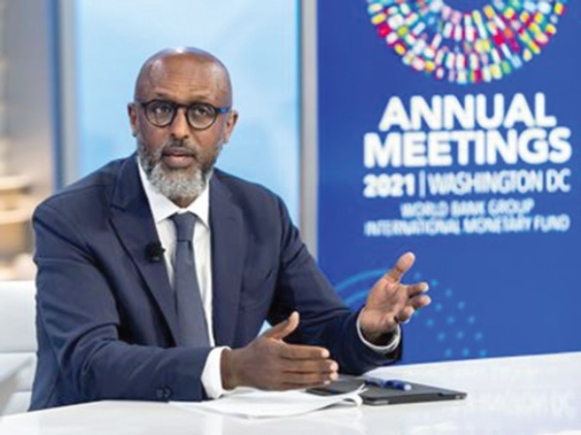
IMF defends use of Common Framework in debt negotiations
The International Monetary Fund (IMF) has defended the Common Framework for Debt Treatment as the right tool to address debt issues, despite the challenges faced by Ghana and Zambia in using the framework to reach a deal with their creditors.
Addressing the press on the Regional Economic Outlook report launched by the IMF, the Director, African Department of the IMF, Abebe Aemro Selassie, said although the framework had not worked effectively as would have been desired, there would have been much more difficulties without it.
The Common Framework for Debt Treatment is an initiative endorsed by the G20 and the Paris Club to support low income countries with unsustainable debts.
The framework considers debt treatment on a case-by-case basis, driven by requests from eligible debtor countries.
Advertisement
The African continent is currently faced with financial challenges as a result of a debt crisis, with some countries defaulting on their loan repayments, while some opted for a debt restructuring.
Data from the International Monetary Fund in 2023 indicated that 10 countries were in debt distress, with nine of them from Africa. The fund also indicated that over half of low-income African countries were potentially experiencing difficulties in serving their debts.
This debt crisis has led to the closure of the international capital markets in some African countries, including Ghana.
In many heavily indebted nations, debt restructuring has become necessary to bring debt burdens back to sustainable levels and limit the negative impact of greater debt servicing on what is already a fragile socioeconomic environment.
Countries such as Ghana, Ethiopia, Zambia and Chad have all applied for debt restructuring under the Common Framework for debt treatment.
Despite negotiating with its creditors under the Common Framework, Ghana and Zambia appear to be facing some difficulties in reaching a deal with creditors, a situation which has cast some doubts on the effectiveness of the framework.
Debt restructuring painful
Responding to questions from the media, Mr Selassie said debt restructurings were always very painful exercises for both the debtor country and creditors who have to take some losses.
He said sovereign debt restructurings usually took a lot of time, adding that without the Common Framework, the countries wouldn’t have made the progress that had been made.
“Has it worked as efficiently as would be desirable? Perhaps not. But without it, I can tell you that we would be in a much, much more difficult situation.
“Having the Common Framework meant official creditors could come around the table and agree to provide debt relief and ask other creditors to follow suit. And I mean, there has been very, very good progress in the case of Zambia, of course, as you noted, official creditors signed off and the government also just announced a deal
with their Eurobond creditors,” he stated.
For Ghana, again, he said discussions were ongoing just a few months after official bilateral creditors provided financing assurances and the government was in good faith discussions with their creditors.
Regional economic outlook
On the regional economic outlook for Sub-Sahara Africa, Mr Selassie said after four challenging years and multiple shocks, Sub-Saharan Africa's economy appeared to be on the mend.
He said the IMF expected economic growth to rise to 3.8% in 2024, from 3.4% last year.
“After peaking at almost 10% in late 2022, inflation has nearly halved to around 6% in the early part of the year thanks to decisive action by central banks.
“This includes slower food price increases, a positive development for a region where the cost of crises has been acute in recent years,” he said.
In addition, he said fiscal consolidation efforts were starting to pay off, with the median public debt stabilising at around 60% of GDP, halting a 10-year upward trend.
With global financial conditions easing, Mr Selassie said a few countries have been able to return to international markets, ending a two-year hiatus.
“These are encouraging signs. But the region is not out of the woods yet. Far too many countries still face a funding squeeze.
“Their borrowing costs are high and funding sources are curtailed. Government interest payments now account for about 12% of revenues, more than double the level a decade ago. And official development assistance has become scarcer,” he stated.
He said this meant that much-needed funds were being diverted from spending on investment and development to interest payments, with consequences for the region’s growth potential and its ability to withstand future shocks.

